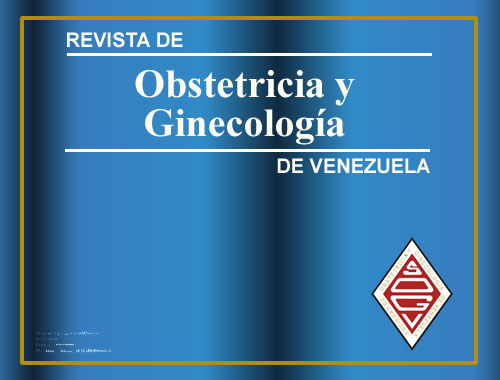Alerta temprana en obstetricia: evaluación de dos sistemas (MEOWS – MEWT)
DOI:
https://doi.org/10.51288/00850106Palabras clave:
Mortalidad Materna, Sistema Modificado de Alerta Temprana en Obstetricia, Marcador Materno de Alerta Temprana, MEOWS, MEWT, Maternal Mortality, Modified Early Warning System in Obstetrics, Maternal Early Warning MarkerResumen
Objetivo: Evaluar el rendimiento diagnóstico del sistema modificado de alerta temprana en obstetricia y del marcador materno de alerta temprana para la detección de riesgo de complicaciones en pacientes que ingresaron al servicio de medicina materno fetal de la Maternidad Concepción Palacios, entre enero 2022 y septiembre 2023. Métodos: Estudio observacional, retrospectivo, correlacional y comparativo; se analizaron historias clínicas de pacientes ingresadas en el servicio durante el período descrito. Para calcular el riesgo de complicaciones, se emplearon dos instrumentos: el sistema modificado de alerta temprana en obstetricia y el marcador materno de alerta temprana. Se correlacionaron los resultados con la evolución de las pacientes para calcular los índices de rendimiento de ambos sistemas de alerta para detección de riesgo de complicaciones. Resultados: El sistema modificado de alerta temprana en obstetricia presenta mayor especificidad y valor predictivo positivo que el marcador materno de alerta temprana, presentando además un nivel bueno; mientras que la sensibilidad es mayor en el marcador materno de alerta temprana, aunque solo alcanza un nivel regular; por último, el valor predictivo negativo del sistema modificado de alerta temprana en obstetricia es levemente superior, aunque ambos se ubican en un nivel malo. Conclusión: Los sistemas de alerta temprana son una herramienta útil para la detección de anormalidades y atención oportunas en la paciente obstétrica. En este estudio, ambos sistemas identificaron más del 50 % de las pacientes con alto riesgo de muerte en el momento del ingreso siendo, en su mayoría, de causa hemorrágica y trastornos hipertensivos del embarazo.
Objective: To evaluate the diagnostic performance of the modified early warning system in obstetrics and the maternal early warning marker for the detection of risk of complications in patients who were admitted to the maternal-fetal medicine service of the Concepción Palacios Maternity Hospital, between January 2022 and September 2023. Methods: Observational, retrospective, correlational and comparative study. Medical records of patients admitted to the service during the period described were analyzed. Two instruments were used to estimate the risk of complications: the modified obstetric early warning system and the maternal early warning marker. The results were correlated with the evolution of the patients, to calculate the performance indices of both alert systems for the detection of risk of complications. Results: The modified early warning system in obstetrics has greater specificity and positive predictive value than the maternal early warning marker, also presenting a good level. While sensitivity is higher in the maternal early warning marker, although it only reaches a regular level. Finally, the negative predictive value of the modified early warning system in obstetrics is slightly higher, although both are at a poor level. Conclusion: Early warning systems are a useful tool for the detection of abnormalities and timely care in obstetric patients. In this study, both systems identified more than 50% of patients with a high risk of death at the time of admission, most of which were due to hemorrhagic causes and hypertensive disorders of pregnancy.

